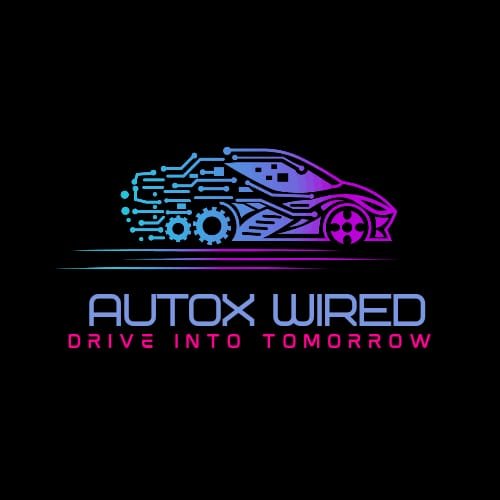
Regenerative braking is an energy recovery mechanism used in electric vehicles (EVs) and hybrid vehicles to improve energy efficiency and extend driving range. Unlike conventional braking systems, which dissipate kinetic energy as heat, regenerative braking captures some of this energy and converts it back into electrical energy, which is then stored in the vehicle’s battery. This process not only enhances the overall efficiency of electric vehicles but also reduces wear and tear on the brake components, providing multiple benefits for both the driver and the environment. This article will explore how regenerative braking works, its benefits, different types, and its role in modern electric vehicle.
1. How Does Regenerative Braking Work?
Regenerative braking operates on the basic principle of converting kinetic energy (the energy of motion) back into electrical energy. In an electric vehicle, the electric motor plays a dual role: it not only propels the vehicle forward but also functions as a generator when braking.
Key Components Involved in Regenerative Braking:
- Electric Motor: Acts as a generator during braking.
- Battery Pack: Stores the recovered electrical energy.
- Power Electronics: Manages the flow of energy between the motor, battery, and other vehicle systems.
The Regenerative Braking Process:
- Braking Initiation: When the driver releases the accelerator pedal or presses the brake pedal, the vehicle’s control system activates regenerative braking.
- Motor Reverses Function: The electric motor, which normally drives the wheels, starts operating in reverse. It acts as a generator, using the wheels’ rotational energy (kinetic energy) to generate electricity.
- Energy Conversion: As the motor generates electricity, it creates a resistance or drag that slows down the vehicle. The kinetic energy that would have been lost as heat in a conventional braking system is instead converted into electrical energy.
- Energy Storage: The generated electrical energy is sent back to the battery pack, where it is stored and can be reused to power the vehicle.
2. Benefits of Regenerative Braking
Regenerative braking offers several advantages, particularly for electric and hybrid vehicles:
1. Increased Energy Efficiency:
- Energy Recovery: Traditional braking systems waste energy by converting kinetic energy into heat. Regenerative braking captures some of this energy, improving overall energy efficiency.
- Extended Range: By recovering energy during braking, regenerative braking helps recharge the battery, effectively extending the vehicle’s driving range. This is particularly beneficial for city driving, where frequent stops and starts occur.
2. Reduced Brake Wear and Maintenance Costs:
- Less Wear on Brake Components: Regenerative braking reduces the reliance on friction brakes (traditional brake pads and discs), leading to less wear and tear on these components. This can lower maintenance costs and increase the lifespan of brake systems.
- Improved Safety: Regenerative braking systems work in tandem with traditional brakes, providing an additional layer of braking force. This can enhance braking performance and safety, especially in emergency situations.
3. Enhanced Driving Experience:
- One-Pedal Driving: Many electric vehicles offer a feature called “one-pedal driving,” where the regenerative braking system slows the car down significantly when the driver releases the accelerator pedal. This provides a more seamless and intuitive driving experience, especially in stop-and-go traffic.
4. Environmental Benefits:
- Reduced Emissions: Since regenerative braking reduces the energy consumed from the battery, it helps decrease the overall energy demand and reduces greenhouse gas emissions, especially when the electricity used to charge the vehicle comes from renewable sources.
3. Types of Regenerative Braking Systems
Regenerative braking systems can vary depending on the type of vehicle and its drivetrain. Here are the primary types:
1. Regenerative Braking in Electric Vehicles (EVs):
- Battery Electric Vehicles (BEVs): In pure electric vehicles, the regenerative braking system is fully integrated with the electric drivetrain. The electric motor serves as both a propulsion device and a generator for energy recovery during braking.
- Plug-in Hybrid Electric Vehicles (PHEVs): In plug-in hybrids, regenerative braking works similarly to that in pure EVs, recovering energy to recharge the battery. However, PHEVs also have an internal combustion engine that can assist with braking when necessary.
2. Regenerative Braking in Hybrid Vehicles:
- Mild Hybrids: Mild hybrids use regenerative braking to capture energy that is then stored in a small battery pack. This energy assists the engine during acceleration or powers auxiliary systems, like air conditioning or infotainment.
- Full Hybrids: Full hybrids use a more robust regenerative braking system, which allows the vehicle to operate in electric-only mode for short distances and recover more energy during braking.
4. Factors Affecting the Efficiency of Regenerative Braking
While regenerative braking is a highly effective system, its efficiency can be influenced by several factors:
1. Driving Conditions:
- City vs. Highway Driving: Regenerative braking is most effective in urban settings with frequent stop-and-go traffic, where the vehicle slows down often, allowing more opportunities to recover energy. In contrast, highway driving, which involves sustained speeds with less braking, offers fewer chances for energy recovery.
2. Battery State of Charge:
- Battery Capacity: The efficiency of regenerative braking is partially dependent on the state of charge (SoC) of the battery. If the battery is nearly full, the system may limit regenerative braking to prevent overcharging, reducing its effectiveness.
- Battery Temperature: Extreme temperatures, both hot and cold, can affect the battery’s ability to accept and store the recovered energy efficiently.
3. Vehicle Weight and Aerodynamics:
- Heavier Vehicles: Heavier vehicles typically have more kinetic energy to recover during braking, making regenerative braking more effective. However, additional weight also means higher energy consumption for acceleration, which could offset the benefits.
- Aerodynamics: Vehicles with better aerodynamic design require less energy to maintain speed, reducing the need for braking and the potential for energy recovery.
4. Motor and Controller Design:
- Motor Efficiency: The design and efficiency of the electric motor and power electronics play a significant role in how effectively energy is captured and converted back into electricity.
- Controller Optimization: Advanced software algorithms optimize how much regenerative braking is applied, depending on various factors such as speed, road conditions, and driving mode.
5. Regenerative Braking in Modern Electric Vehicles: Key Innovations
Recent advancements in regenerative braking technology have led to several innovations that enhance its effectiveness and user experience:
1. Adaptive Regenerative Braking:
- Smart Regeneration: Modern electric vehicles, like those from Tesla, BMW, and Audi, offer adaptive regenerative braking, where the level of regeneration is adjusted automatically based on driving conditions, speed, and road incline. This provides a more seamless driving experience and maximizes energy recovery.
2. Integration with Advanced Driver Assistance Systems (ADAS):
- Collision Avoidance and Safety: Regenerative braking systems are increasingly being integrated with ADAS features such as automatic emergency braking (AEB). This integration allows the vehicle to use regenerative braking as the first step in slowing down before deploying traditional brakes, providing a smoother and more efficient deceleration.
3. Enhanced User Controls and Customization:
- Adjustable Regeneration Levels: Many EVs offer drivers the ability to customize the level of regenerative braking through settings on the dashboard. This allows drivers to choose their preferred level of deceleration when lifting off the accelerator, enhancing comfort and driving style adaptability.
6. Challenges and Limitations of Regenerative Braking
While regenerative braking offers numerous advantages, it is not without its challenges and limitations:
1. Limited Braking Power:
- Inadequate for Full Braking Needs: Regenerative braking alone is not sufficient for all braking scenarios, especially during emergency stops or at high speeds. Therefore, traditional friction brakes are still necessary to provide additional stopping power.
2. Reduced Effectiveness at Low Speeds:
- Low-Speed Limitations: At very low speeds, the electric motor generates less electricity, and the regenerative braking effect diminishes. In such situations, the vehicle relies more on traditional brakes.
3. Impact on Battery Life:
- Battery Degradation: Frequent and aggressive regenerative braking can generate heat and stress on the battery, potentially affecting its lifespan. However, most modern EVs are equipped with thermal management systems to mitigate these effects.
4. Variable User Experience:
- Driver Adaptation: Some drivers may need time to adjust to the different feel of regenerative braking compared to conventional braking. The sensation of deceleration when lifting off the accelerator can be disconcerting initially, although many drivers come to appreciate it for its efficiency and convenience.
7. The Future of Regenerative Braking in Electric Vehicles
The future of regenerative braking looks promising, with ongoing developments and innovations aimed at enhancing its efficiency, effectiveness, and integration with other vehicle systems.
1. Improved Energy Recovery Algorithms:
- Advanced AI and Machine Learning: Automakers are developing advanced algorithms that leverage AI and machine learning to optimize regenerative braking performance in real-time, based on driving behavior, road conditions, and traffic patterns.
2. Integration with Smart Grids:
- Vehicle-to-Grid (V2G) Technology: Regenerative braking systems could be integrated with vehicle-to-grid (V2G) technology, allowing EVs to not only recover energy while braking but also supply excess energy back to the grid, supporting grid stability and renewable energy integration.
3. Enhanced Regenerative Braking in Autonomous Vehicles:
- Autonomous Driving Integration: Autonomous vehicles (AVs) will rely heavily on regenerative braking to maximize efficiency and extend range. The precision of AV systems allows for more consistent and optimal use of regenerative braking, reducing the wear on traditional brake components and improving overall energy efficiency.
Conclusion
Regenerative braking is a game-changing technology for electric vehicles, providing significant benefits in terms of energy efficiency, extended range, reduced brake wear, and improved driving experience. As electric vehicles become more prevalent, advancements in regenerative braking will continue to play a vital role in enhancing the sustainability and performance of modern transportation. With ongoing innovations and integration with emerging technologies, regenerative braking is set to become even more effective, further driving the adoption of electric vehicles worldwide.







